Background
There is way too much information regarding the legacy, history, and legend of Alfred Hitchcock’s masterpiece, Psycho (1960). That being said, I decided to only include trivia regarding the film’s financial budget and gains, as well as its placement in horror film history. The information I relate here mainly comes from Psycho‘s IMDB trivia page, The Evolution of Horror podcast’s Psycho/Peeping Tom episode, and The Faculty of Horror podcast’s Psycho/Peeping Tom episode.
In the making and marketing of this film, Alfred Hitchcock devoted a large amount of consideration to the profits he hoped to gain.

An early New York City screening of Psycho
In the first place, he wanted the film’s plot to be kept secret. In order to accomplish this, he took a number of actions:
- All cast and crew members had to raise their right hands during the first day of filming and swear that they would keep the film a secret.
- Hitchcock withheld the last part of the script from the cast and crew until they absolutely needed to film it.
- Hitchcock anonymously purchased the rights to the novel on which the film is based from the author Robert Bloch for $9,000 and bought as many copies of the text in order to keep the end a secret.
- Hitchcock released three trailers for the film, none of which included scenes from the actual film. One discusses the rules about arriving to the theatre on time, the second instructs audiences to not talk about the movie with others (so that the ending remains a surprise), and the third features Hitchcock walking through the filmic crime scene cheekily (see the trailer above).
- Nobody was allowed to enter the theatre after the film began. In order to accomplish this, a number of systems were put into place at movie theaters showing Psycho. The studio provided a record play in the theaters’ foyer which contained background music and a voice interrupting to provide a count-down to start-time (“Ten minutes to Psycho time…” etc.). Theatres were also instructed to put a cardboard cut-out of Hitchcock, in some cases pointing to his watch, complete with a description of the strict lateness policy.

Hitchcock also made sure that the low-budget film would return a high profit directly into his own pocket. He was successful for a number of reasons…
- Paramount Studios didn’t want to give too much money to Psycho because they believed it wouldn’t be very successful due to its disturbing source material. In order to make the film, Hitchcock, already a well-known director, needed to defer his standard $250,000 salary in lieu of 60%of the film’s gross. Paramount agreed to this deal, causing Hitchcock to instead receive over $15 million dollars in personal earnings from the film.
- Hitchcock chose to shoot the film in black and white mainly because of the cost-savings (a secondary reason was that it would be too gory if shot in color). This, as well as his decision to cast less-known actors and employ a television crew, allowed Hitchcock to keep the budget, largely self-funded, at (an estimated) $806,947.
- Because Hitchcock funded so much of the film himself, accepted a major pay-cut, and filmed a lot of the movie at his lot at Universal, he was able to claim a lot of control over the film itself as well as how it was marketed and shown. That being said, studio execs and funders were still able to ensure the final infamous psychiatrist explanation scene that Hitchcock hated and has since been panned as one of his worst scenes by critics (It is really boring, long, and over-the-top… horror films shouldn’t include such concrete explanations of their monsters).
Psycho obviously boasts a great influence on the horror genre films that followed it in England and America. John Belton, along with other critics, cited Psycho as the film that moved the horror genre from its classical period (in which monsters were physically monstrous, inhuman, and from different time periods and the Old World of Europe), to the modern period, which focused on human monsters that are produced as a result of contemporary American society and the American family. Norman Bates (Anthony Perkins) was so shocking because he seemed boyish, normal, and unassuming. This helps to add to the sense of uncanny in the film. Additionally, Marion Crane (Janet Leigh) goes to the Bates Motel only because a highway patrol officer (Mort Mills) warns her that stopping at a motel is safer than sleeping on the side of the road in her car.

Psycho (along with Peeping Tom, which was released a mere two months prior) is typically credited with starting the slasher genre. Black Christmas (1974) might be themore accurate “first” slasher, however, with John Carpenter’s Halloween (1978) as the slasher which all others seek to replicate. Still, Psycho‘s influence on the creation of the sub-genre is pretty clear. Marion is killed by Norman only after she is seen post-coitus with her boyfriend (non-marital sex!) and on the lam after stealing $40,000 from one of her job’s clients. Meanwhile, her more virginal sister, Lila Crane (Vera Miles) is able to investigate her sister’s disappearance (with the help of Sam Loomis, Marion’s boyfriend) and survive to tell the tale. Lila could also be deemed more masculine in that she is able to move through the male-dominated world without being the constant focus of the male gaze.
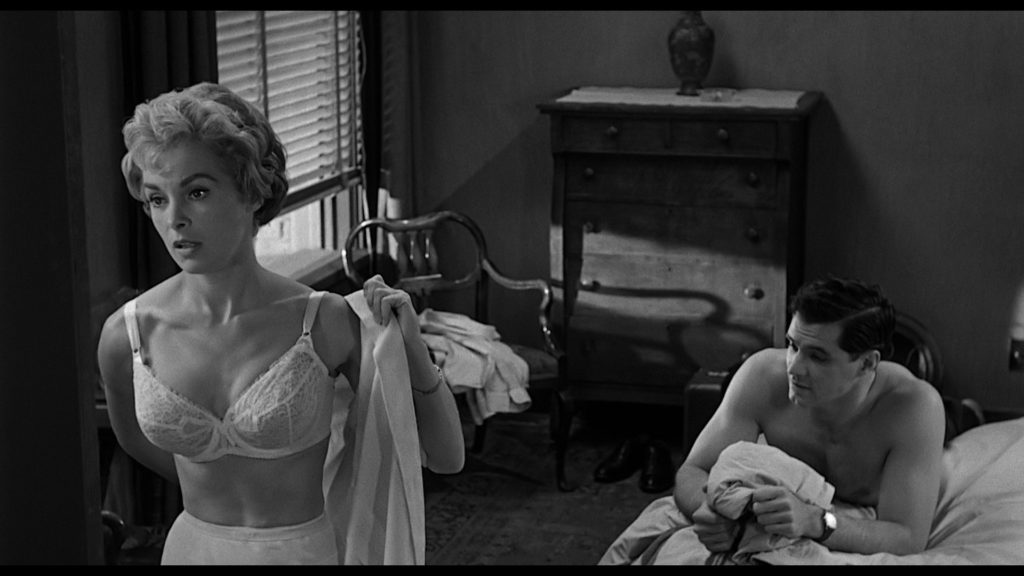
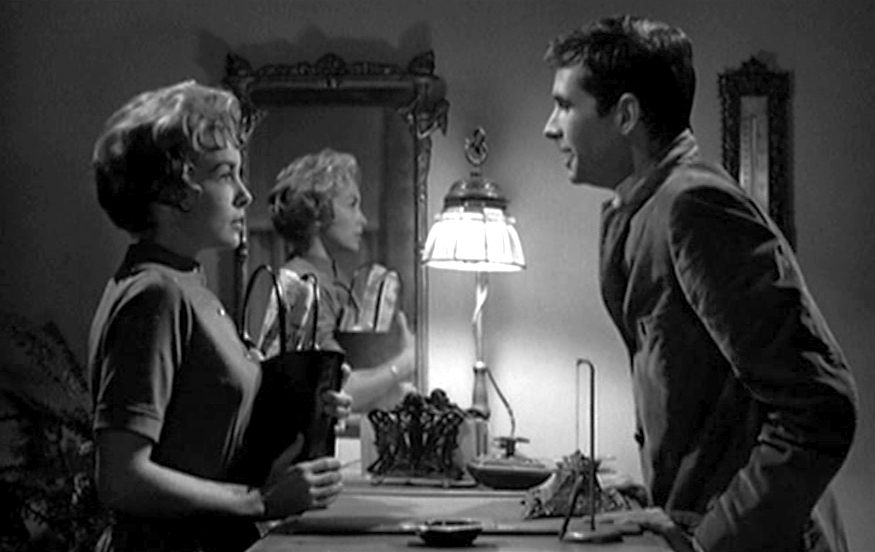
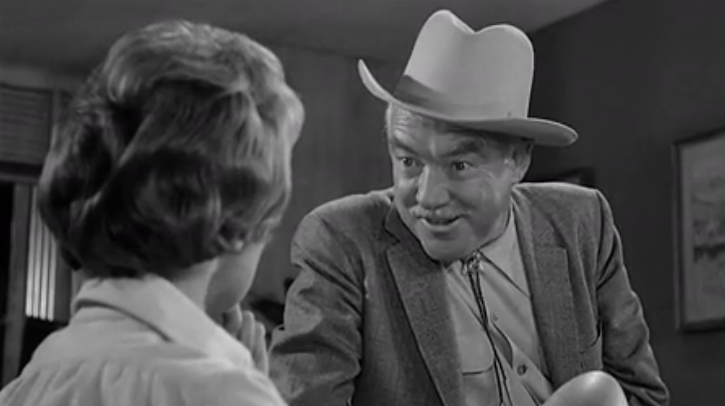


Additionally, Lila is more direct and speaks with far more certainty, while Marion moves through the world quietly and demurely, and often flirts with the men she encounters. Lila is therefore a sort of early-prototype of the final girl.
That being said, however, one thing that the Faculty of Horror pointed out about the action and plot line of Psycho is entirely driven forward by the very active female characters. When Marion learns she can’t marry Sam because he doesn’t have the money to support her, she goes ahead and steals the money; It’s Lila who pushes the sheriff to search the Bates house, even after both the sheriff and Sam tell her that Marion probably just left town; You could also argue that it is Mrs. Bates within Norman’s body who kills Marion.
John Carpenter’s Halloween includes a number of direct references to Psycho, including the casting of Jamie Lee Curtis as the exemplary final girl, Laurie Strode. Curtis was Janet Leigh’s daughter, a fact which caused Carpenter to desperately want to cast her. Additionally, Micheal Myers’ doctor, Dr. Samuel Loomis is named after Marion Crane’s boyfriend, Sam Loomis. This reference is repeated in Wes Craven’s Scream (1996) with Sidney Prescott’s (Neve Campbell) boyfriend, Billy Loomis (Skeet Ulrich). The main character of American Psycho (2000) is named Patrick Bateman, a nice reference to the original American psycho, Norman Bates (who Alfred Hitchcock supposedly repeatedly referred to as “Master Bates” while on set).
Finally, two of Psycho‘s major contributions to the horror genre includes its push of boundaries and its method of filming. There are two major shocking moments, one of which is an early “jump scare,” when Mrs. Bates emerges from a closed room suddenly to stab the private investigator Arbogast (Milton Balsam), the second being the shower scene… but more on this one later. Additionally, there were a number of moments well-calculated to shock its 1960’s audience. First, the filming is almost documentary-like, sometimes providing the viewer with a bird’s eye view. The film opens with a pan of the city before zooming in, and entering into the hotel bedroom where Marion and Sam are discussing their inability to marry. The camera also takes on Norman Bates’s perspective a few times, most notably when he peeks into Marion’s room to watch her and during the shower scene, where the camera flips between Marion’s and “Mrs. Bates’s” vision.
Another shocking moment of the film is when Marion Crane, the seeming heroine of the film, played by Janet Leigh, the most well-known actress of the film, suddenly dies a third of the way into the movie. This is a major reason why Hitchcock didn’t want people to enter into the theatre late. Not only is the audience suddenly without a heroine, but we are suddenly switched into Norman Bates’s perspective, who were are forced to follow for most of the rest of the movie. This move causes the audience to become implicit with the murders of Norman, especially as we share his status of the film’s voyeur.
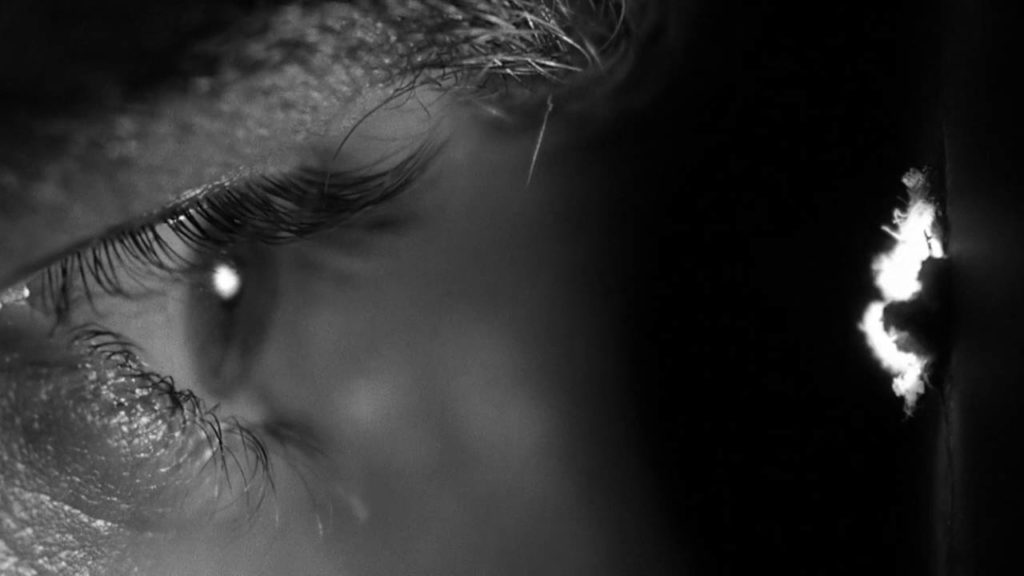
Hitchcock also managed to shock audience through pretty minor moves. For one, this is the first live-action film to feature a flushing toilet. It also included Marion Crane taking a shower. The sounds of Crane’s body being stabbed were also pretty shocking, but thanks to Bernard Hermann’s incredible score (Hitchcock hated the movie until he heard the score along with it… he raised Hermann’s salary as a result), the stringed instruments (the entire soundtrack is strings because Hermann considered this the musical equivalent to a black and white film) distract from the graphic sounds of the blade entering into her flesh.
Summary
After stealing $40,000 from her real estate job in order to have enough money to marry and settle down with her boyfriend Sam Loomis (John Gavin), Marion Crane goes on the lam, driving from Arizona to California. Along the way, she raises the suspicions of a highway patrol officer and exchanges her car. After it begins to rain one night, she checks in under a pseudonym to the Bates Motel, an out-of-way family establishment. She hears Norman Bates and his mother arguing from the nearby house, but thinks nothing of it and agrees to have a dinner of sandwiches with Norman, during which he informs her of his bizarre relationship with his mom. That night, as she is taking a shower, Marion is stabbed by a dark figure that appears to be Mrs. Bates. Norman discovers Marion’s dead body and cleans the crime scene, disposing of Marion, her money, suitcase, and her car into a nearby lagoon. Troubled by the disappearance of both Marion and the money, her boss hires a private detective to investigate. After the PI is killed by Mrs. Bates, Marion’s sister, Lila, and Sam pick up the investigation. Lila discovers the decomposing skeleton of Mrs. Bates in the Bates home’s fruit cellar, and Norman is stopped by Sam in his last second attempt to kill Lila. Norman is dressed as Mrs. Bates. In the final scene, the audience learns that Norman had a split personality following the death of his mother (who he poisoned). It was the mother part of him that killed out of jealousy of the women who inspired lust in Norman.
Notes and Scenes
- Hitchcock’s use of black and white is notable. Marion is first scene wearing white clothing and lingerie and using a white purse. After she steals the money, she wears darker clothing, carries a black purse, and wears a black bra. She removes this black bra (although this moment was originally censored for US audiences) in order to enter the shower, which is surrounded by a white curtain. This shower originally feels like a moment of restoration of purity, especially due to the fact that it comes after the moment she decides to return the money. However, the black figure of Mrs. Bates appears, killing Marion, and causing her (black) blood (filmed using Hershey’s chocolate syrup) to flow from her white body into the black drain.
- Psycho is hyper-concerned with disposal and consumption, especially in the first half of the film. The client at Marion Crane’s office claims he is comfortable with carrying as much money as he can comfortably loose ($40,000) and encourages her to take a trip to Las Vegas. At the car dealership where Marion seeks to trade in her car, she assures the dealer that there’s nothing wrong with her car, before the dealer finishes her sentence with “-you’re just sick of the sight of it.” After Marion’s murder, the film spends about ten minutes watching Norman Bates silently and thoroughly clean up the crime scene. He removes the blood and carefully disposes of Marion’s body and her possessions.
- Given the fact that Psycho is considered to be the first film of the “modern horror film” era, it’s fascinating how Hitchcock places a very contemporary American piece of architecture (the motel) next to the looming gothic mansion that is the Bates home.
- It is made very clear that the car Marion drives is a Ford. Also, it is not until the end that the state police are called upon to solve the crime. Originally, it was kept private so that Marion, if found, would not be in trouble. Therefore, her boss and the client employ a private detective.
- Marion’s money is also followed very closely and is assumed to be the cause of her murder. The Bates Motel is not doing very good business (causing Norman to labor at his bird taxidermy) and a woman carrying $40,000 is “likely to be noticed,” according to the private investigator. While Norman disposes of the evidence, the camera zooms in on the newspaper in which Marion hid the money. He almost forgets it, but eventually finds it, and dumps it along with the rest of her possessions. This is (probably) part of the shock of Marion’s sudden murder, as the first third of the film is so focused on Marion’s guilt at stealing and her desperation for the money.
- Related to the importance of the $40,000 is Psycho‘s subversion of the American dream. Despite the fact that Marion has a good job at a real estate office (or at least it appears good) and her boyfriend Sam seems to own his own shop (it’s called Loomis Hardware), the opening scene details their predicament: they don’t have enough money to get married. They seem to be operating under a very Fordist conception of marriage and the American family, in which Marion would quit her job and become a housewife, so Sam would need to be able to take care of her, which he claims he cannot do at this point. Norman (much like the Sawyer family in The Texas Chainsaw Massacre) is also a victim of capitalism. He has inherited his failing family motel which was once located on a major highway, but due to recent infrastructure changes, the Bates Motel is out of the way and difficult for potential customers to find. Finally, the client from whom Marion steals the money is both a super capitalist (he claims that money buys happiness and happily discusses his ability to basically sell his 18 year-old daughter into a marriage) and not very likable. In a voice-over (whether this takes place only in Marion’s mind or in real life is difficult to say), the client demands for Marion’s flesh to pay for the money she stole.
- Part of Norman’s anger at his mother’s boyfriend was the fact that he convinced Mrs. Bates to put all of her money into buying the motel. Originally, the Bates Motel was on a major highway and boasted a great business, however, as Norman explains, the highway moved and now nobody finds the place except by accident.
- There is not a single example of a typical American family. The Bates family has been destroyed (Norman killed his mother and her boyfriend), Marion can’t marry Sam, so they engage in pre-marital sex, the sheriff and his wife are an old couple, and the real estate client describes basically selling his daughter off into marriage.
- I’m sure this movie has a possible ecogothic reading. Norman’s love of bird taxidermy and his aversion to any other form of the art is interesting, but I don’t know yet what to make of it. Additionally, Marion Crane’s name is obviously meant to evoke the image of a bird. She even stands in front of bird paintings when Norman first spies on her and he later tells her that she “eats like a bird” while he watches her eat. A number of publicity photos highlight the role of birds in the film. Plus, it is the rain that causes Marion to stop at the Bates Motel and it is a nearby swamp where Norman deposits his victims. Throughout the first half of the film, despite it being set in December, characters complain about the heat and reference the need for air conditioning or opening the windows (maybe it’s hot in December in Arizona and California?).


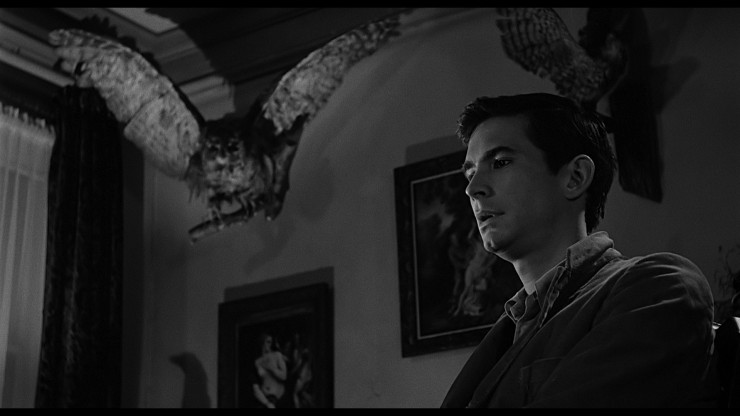


- Finally, The Faculty of Horror described the infamous shower scene as Marion Crane attempting to enjoy the great American pastime of shower. Apparently, in the post-war era, Americans suddenly had a lot more time to spend on showering and pampering.

